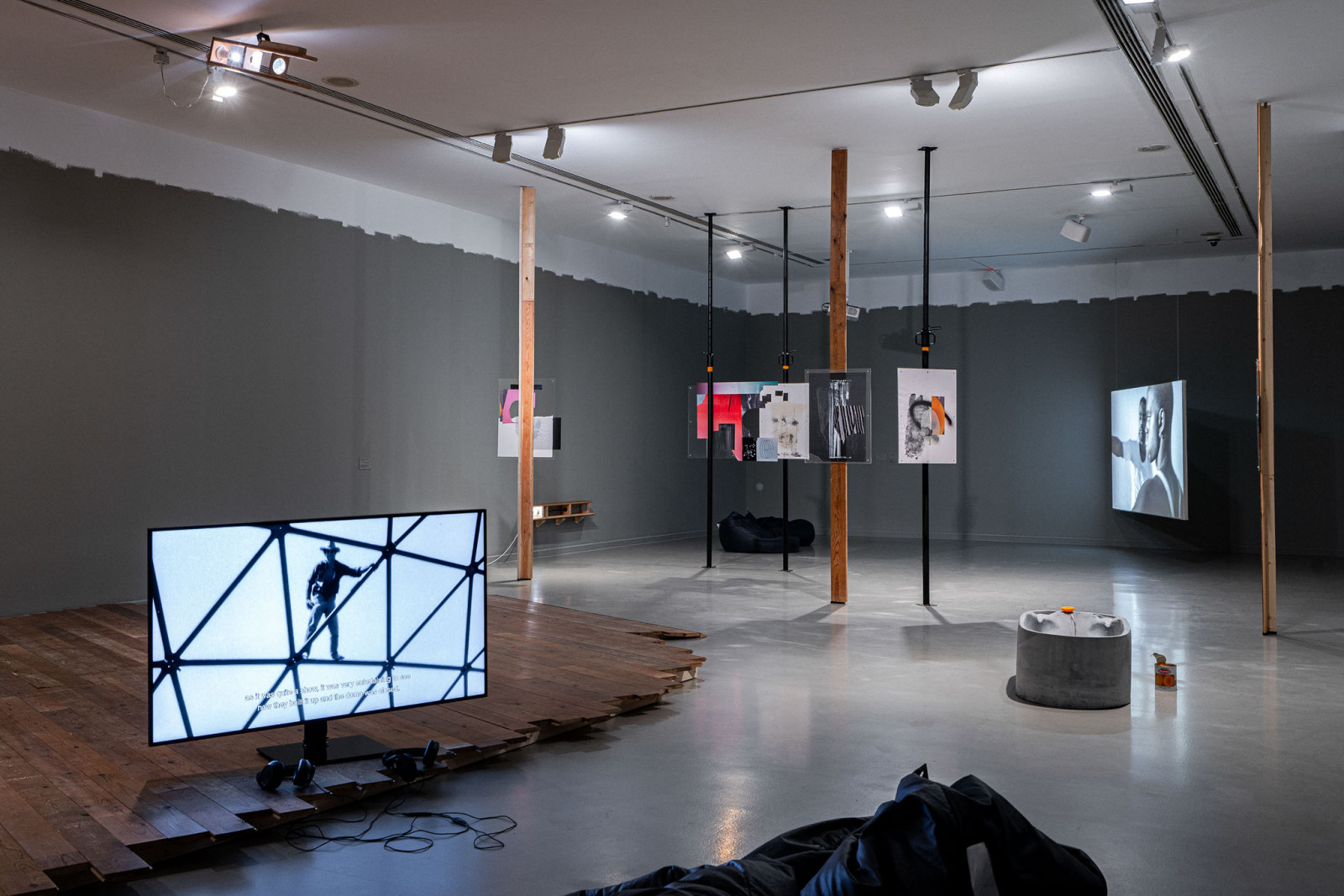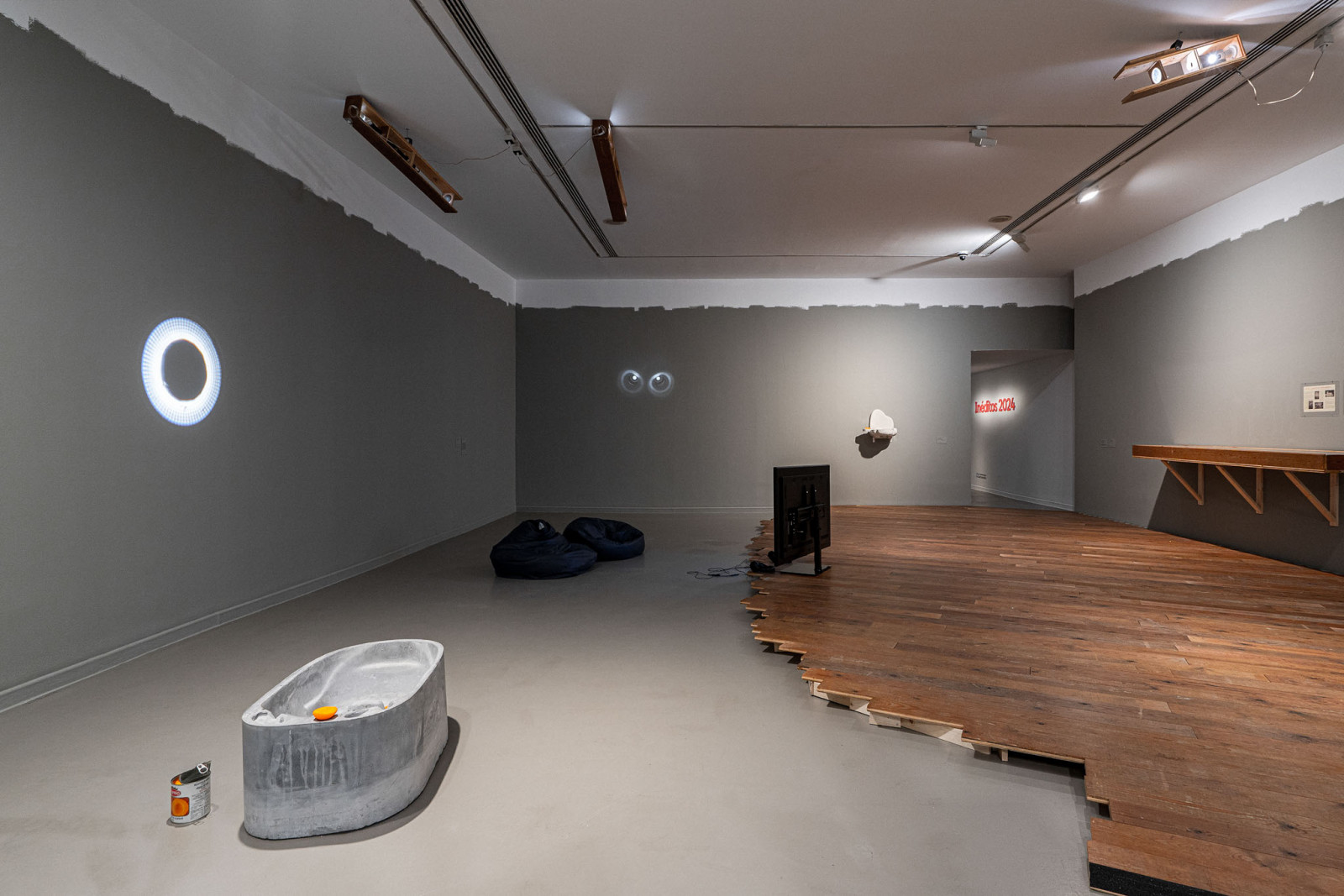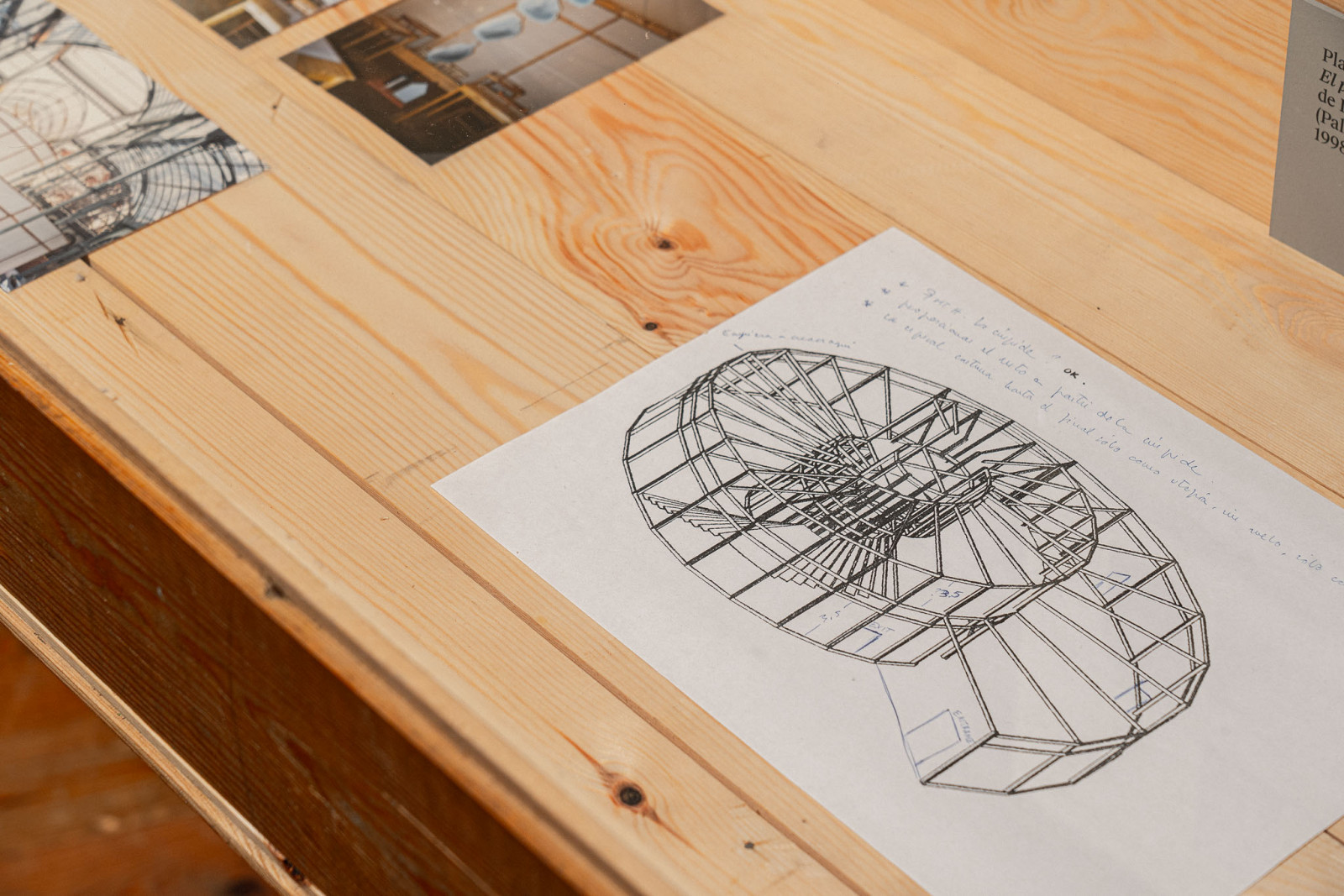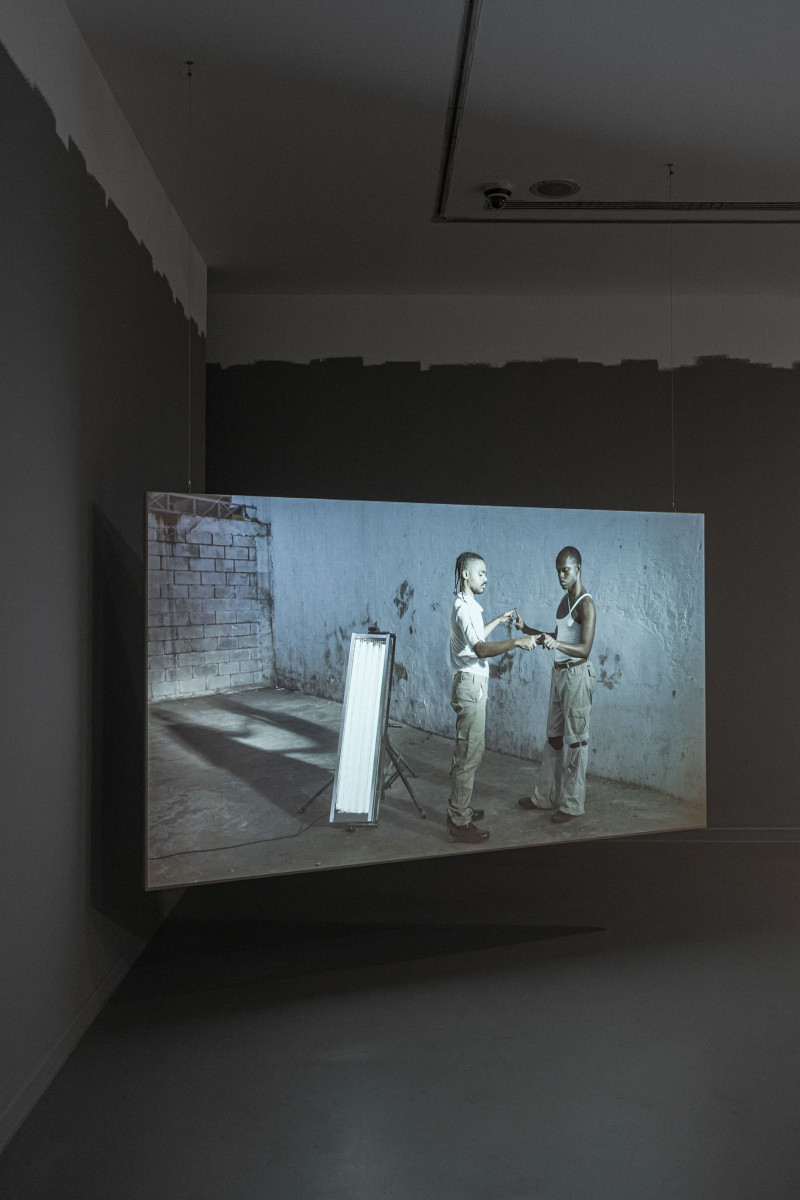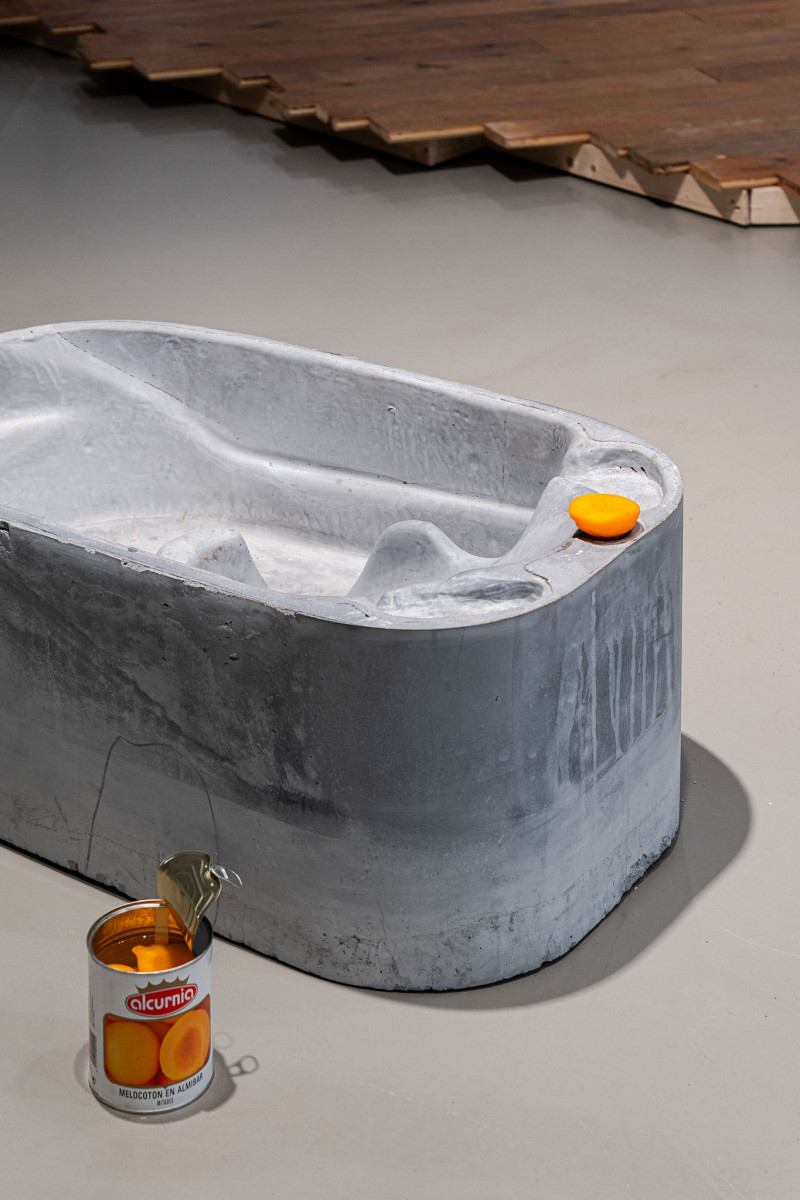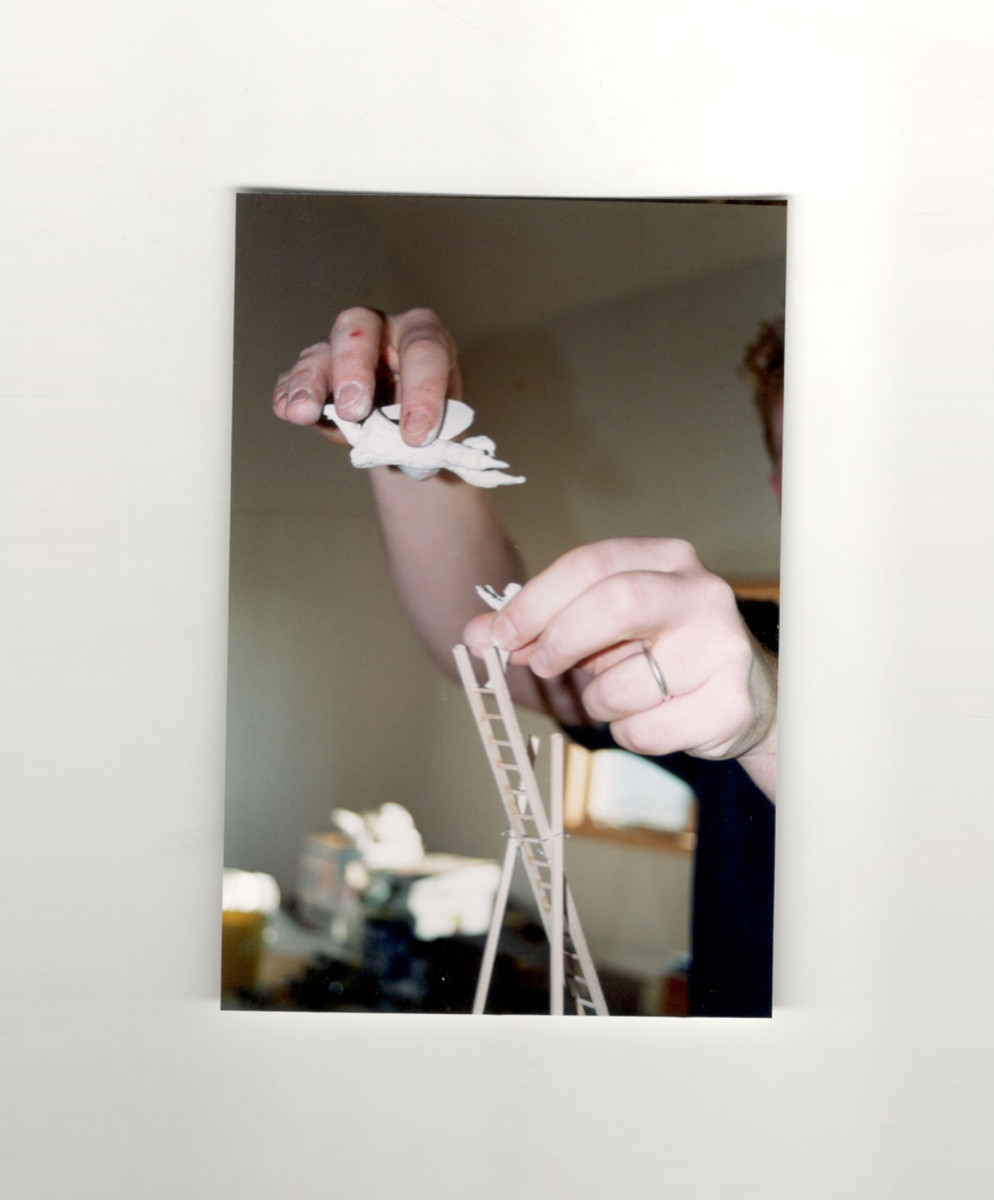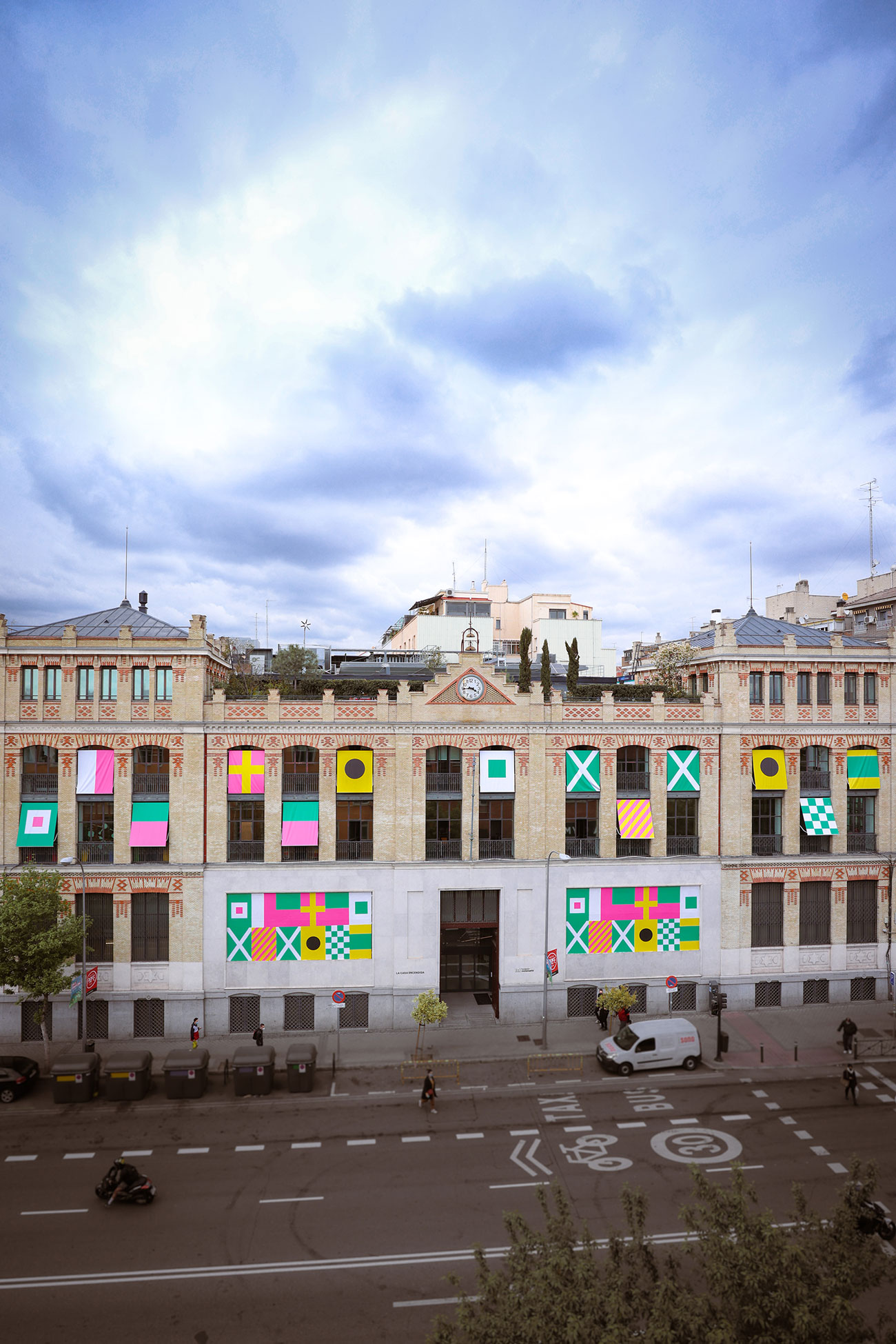Standing but not operating (inversión cobra roll)
Within the programming of
Inéditos 2024| Location: | Sala E |
How can we navigate states of vertigo together? How can we broaden our concept of gravity in this time of crisis? To what extent does the loss of orientation give us tools to conceive other formats of language and action?
Curated by Julia Coelho (1990, Salvador de Bahía, Brazil) and Renan Araujo (1987, Santa Rita do Passa Quatro, São Paulo, Brazil), this exhibition is organised around the notions of vertigo, torsion and freefall evoked by the sculptural, mechanical and semantic properties of the Boomerang roller coaster. This model of roller coaster comprises two inversions and a loop, with the trains moving forwards for half the ride and backwards for the other half. These properties reappear in the exhibition space detached from that reference, through the works of five art duos who reflect on the relationships between structure and mobility, using the body as the point of contact: Roser Corella & David Bestué, Noela Covelo Velasco & Víctor Ruiz Colomer, Luiza Crosman & Maíra Dietrich, Mònica Planes & Àlex Palacin, and Davi Pontes & Wallace Ferreira.
A roller coaster can tell many stories: the story of speed, technology, gastrointestinal transits, fear, and adrenaline. The story of mining and classical physics equations. The story of the urban development of a mountain, its housing policy and working-class leisure culture. The story of a city’s cultural structures and infrastructures.
There are currently around fifty Boomerangs in operation around the world. They do not include the one that arrived in Barcelona in 1990 as the promise of new life for the Montjuïc Amusement Park, at a time of urban transformation in the city of the ‘92 Olympic Games.
After eight years of twisting and turning on Montjuïc mountain, Boomerang was sold to the Six Flags amusement park in New Orleans. It was dismantled in Europe and rebuilt in America, where it changed its name to Zydeco Scream, a reference to the Creole music genre in which the main instrument is the accordion.
In 2005 its activity was halted again due to the crisis caused by Hurricane Katrina. The screams that resonated along its tracks were replaced by silence, and the long queues by vegetation springing up between the structures. Part of its body was submerged in water while the other part stretched up to the sky. Its robust, curvy body-machine had proved no match for the hurricane's circular dance.
Freefall, which in an amusement park is merely a symbolic image associated with the idea of thrilling fun, claimed its place in the realm of reality.
